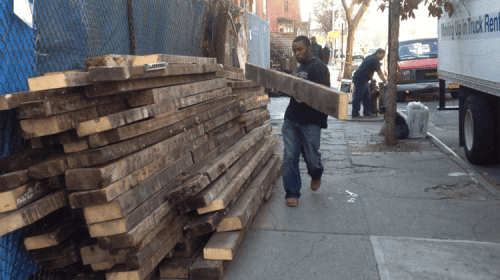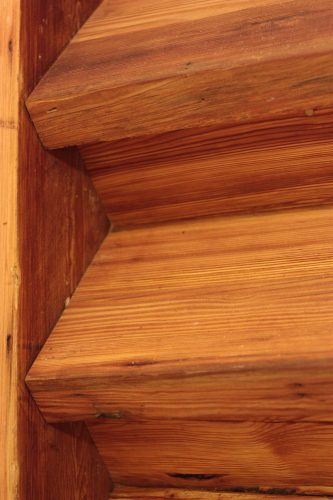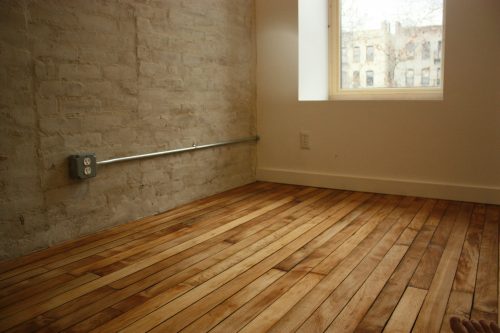Most green contractors advertise their use of “sustainably sourced” wood, meaning the trees are harvested in a less destructive way. What “sustainably sourced” really means, though, can be a slippery slope. Maybe they cut down old-growth forest and plant a monoculture tree farm instead. Maybe they cut down a tree and donate a dollar to someone else’s tree planting fund. It all happens somewhere else, and is easy for clients to ignore, ethical or not. Our wood is sustainable and local, because we salvage it from New York’s dumpsters and demolition sites.
Using salvaged wood has many benefits, the obvious one being that it doesn’t cut down new trees. It lessens the burden on landfills since most of the wood we salvage was headed to the dump. Also important: our process is not based on consumption models that use new materials and leave no sustainable methods for disposing of old ones. By sourcing wood through dumpster diving or salvaging from demolition sites, we change our pattern from one of consumption to one of regeneration.
We got a big haul of great old wood last week. Look for it in future projects!
The wood floors in our Brooklyn show house were picked out of a dumpster. Now they look great next to our exposed brick accent wall.
The brownstone we just finished up in Harlem has a staircase that we built using wood salvaged from a New York City bar.
The floors are made of maple planks salvaged from a 100-year-old Catholic church. Here’s what they look like after being finished, vacuumed, and mopped–all ready to move in!
We don’t buy new materials, but we don’t compromise in the quality of our construction. We turn recycled materials into warm, livable pieces that benefit the homeowners and the planet. A green builder is always looking for synergy: many layers of benefits in one material. This maple wood floor for example has several layers of synergy:
1. The church didn’t have to pay to send the debris to the dump.
2. Since much of NY garbage is trucked out of state, no fossil fuels were burned to remove it.
3. The dump didn’t have to process it, reducing the ecological burden of processing garbage and reducing use of taxpayer money.
4. The clients got antique maple floors for the price of cheap new floors.
5. Not one tree was cut down to provide 4,000sq.ft. of flooring.
6. The materials were sourced in the city and thus no fossil fuels were burned to truck the wood from out of state or country.
7. The wood spent 100 years in the church ballroom where countless weddings, funerals, christenings and other parties were held. To say the wood has history is an understatement. It has Mojo!




